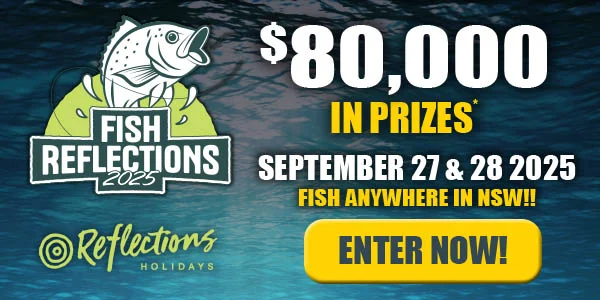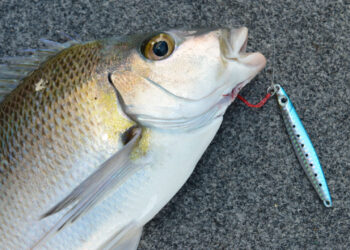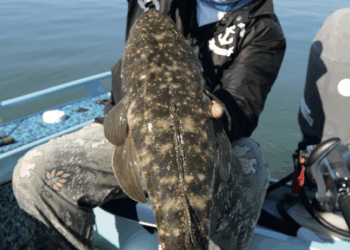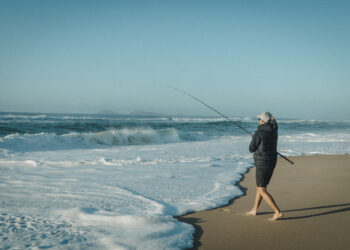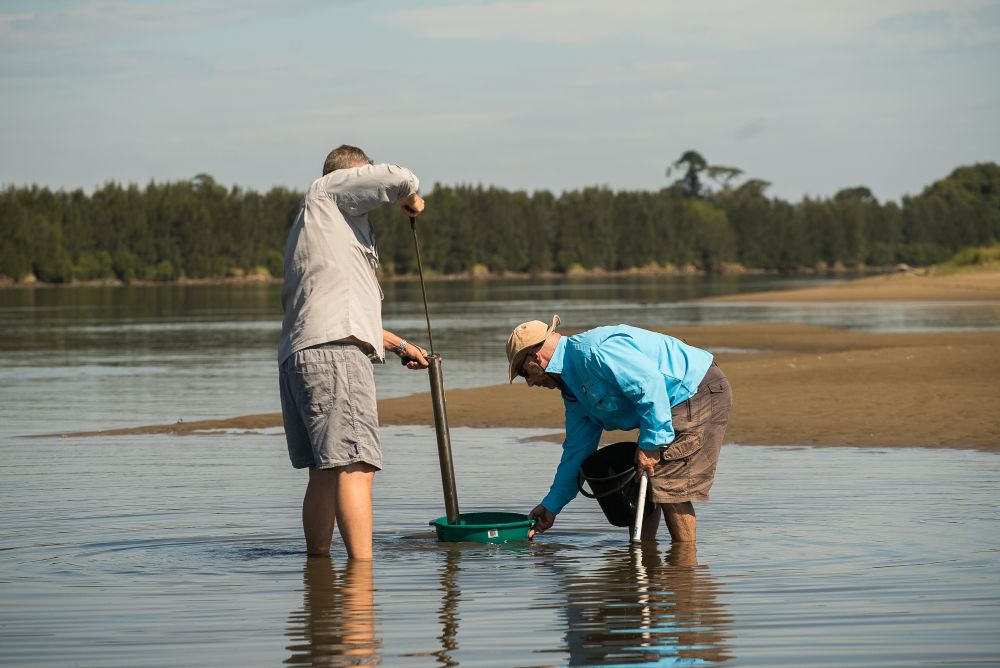
AS DAVID GREEN explains, the more time spent looking and understanding a river, the more success you will have as an angler.
GOOD fishermen are always looking. Fishing is one of the few pursuits left where being intimately aware of the environment around you is very often the key to success or failure. Seeing a small thing, such as the silver flick of a baitfish or a small mud puff in the shallows are all important clues that help in the endless quest to find the right spot. Good anglers look through their eyes, the eyes of others, via electronic transducers, on internet apps, paper charts and weather forecasts.
It is important to be curious. Only the moon and the tides have any degree of certainty. Every other environmental factor will vary on a given day, and all tuned-in fishermen learn to look in order to catch their quarry. The following article is about looking and learning. A fishing experience is always enriched by the little things you see, hear or smell. Rivers are the fundamental link between water and land, a sliding tide of life that cuts through earth and sand and drains away rain and the wastes we impose on it.
You will fish better if you think of the river as the main living organism and the fish as a small component part of the bigger life form. I’ve learnt a lot by looking. It makes me understand more about the fish I chase and gives me great respect for both the strength and vulnerabilities of rivers and estuaries.
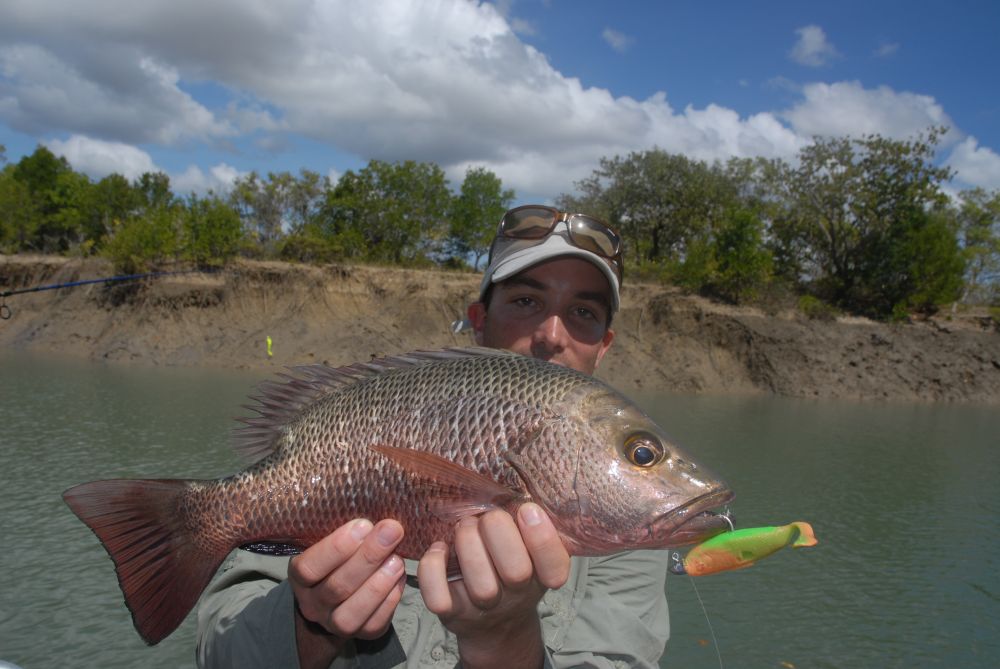
Sand
There is a lot to see on a sand flat at low tide. Once you become literate in reading a sand flat, it will open up to you its secrets and allow you to read it down to the smallest detail. It can be the fine print that counts. Ever since I was a kid I’ve been a keen wanderer and constant observer of these special places. The easier a sand flat is to walk on, the shorter the life story!
Hard sand that rolls in tiny dunes with the push of a tide creates tiny pockets on the down current side of the small hill that may hold a hint of mud and these areas hold important food for passing fish. There are usually far fewer animals that make holes in hard sand when compared to soft sand, and hard yellow sand provides little nutrient for marine plants. The hard sand, however, has some animals to find if you look carefully at the detail.
Small sandy balls can be seen from soldier crabs scuttling about, and these crab armies leave a myriad of tracks on low tide. If you fish a flat at high tide, you need to scrutinise it carefully on low water to learn where most of the fish are likely to hunt. The line where the hard sand meets the muddy softer sand is a great place to start fishing. All types of fish feed along these edges.
When you cast lures or troll across hard sand you find that certain types of fish tend to show up there. On side imaging sounders these hard sand areas are quite easy to pick as they show as a series of ridged lines. There are not nearly as many fish on the sand ridges as there are on the soft mud in my local estuaries, but in these rather barren places we sometimes encounter bar tailed flathead, flounder and stargazers.
Stargazers are very unusual creatures, and one of the few animals I know of that preferentially buries itself in hard sand. Their heavily boned mouth has enormous power and they can crush a wayward finger with ease. Sometimes they rebury themselves after eating the lure, and you may be confronted with the strange sight of your line disappearing into the sand in what seems like a bizarre kind of snag. Hard sand is nice to walk on, but it is the soft squelchy muddy stuff that swallows your croc or thong where the real life story of a tidal flat unfolds.
Soft sand and mud in all unspoilt estuaries holds a lot of life. The intertidal zones of rivers are a constantly moving landscape of flooding and draining water and dry open ground. Animals with gills either hold in small pools, holes or ditches or leave on a dropping tide. Invertebrates thrive in these areas, and these vibrant areas of worms, crustaceans and molluscs are major food sources for wading birds and fish depending on tide cycle. I like to walk on soft sand flats and eel grass beds at low tide, I think it comes from a childhood spent walking such areas with a yabby pump and a bucket.
We also used to puddle in the beds of eel grass weed at low tide when we heard the distinctive “click” of a green yabby. These were a sure fire bait for bream and whiting. They would surface out of the muddy puddle at our feet and go straight into the Austiplas bait bucket. Soft muddy flats hold a lot of clues. In general, the more holes you see, the more fish will be attracted to the area on a full tide.
You may also notice flathead “lies”, the depression in the soft sand left by a flathead after it has covered itself in ambush. If you see a lot of flathead lies, it doesn’t necessarily mean a lot of flathead. A single fish can make a dozen or more “lies” on a single tide. More subtle signs include multiple small depressions caused by bream and whiting where they push their noses into the mud. In tropical Australia barramundi leave similar conical depressions in mud banks from where they often rest in a tail up, head down position.
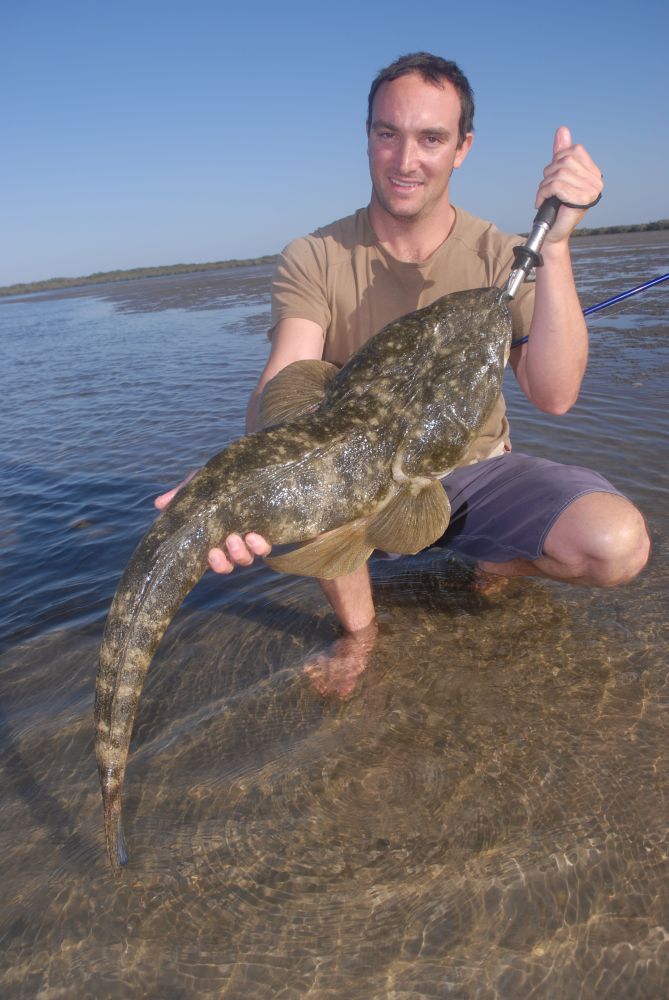
Flats
Flats are not flat. All soft mud or sand flats have small draining channels, often called snake drains. These very important areas are the main corridors of fish movement on and off the flats, and while these drains may only be a few centimetres deeper than the flats themselves they let fish stay up on the sand flats for longer periods of the tide cycle and are great areas to fish.
I like to fish snake drains for flathead in the south and barra and threadfin in northern waters. Baitfish tend to enter and leave a flat by snake drains and they are ideal points for ambush predators to hunt. They also often hold some really big mud crabs! Crab numbers are great indicators of healthy river systems. Regardless of type or size, a lot of crabs in an area means it holds plenty of life to support these voracious creatures. Side imaging technology is very useful in finding snake drains on the flats.
Whiting anglers that collect their own bait are usually very in tune with the right kind of sandflat that will produce worms, baby soldier crabs and yabbies for their next session. The vitality of a healthy mud or sandflat is amazing. These areas hold more creatures per square metre of land than just about any other environment. After a while you can learn to distinguish the different types of holes. Different estuaries hold different mixes of invertebrate life, and most bait collectors know where to find blood worms, squirt worms, yabbies and prawns. Childhood excursions with a yabby pump teach you what to look for.
Stingrays are a sign of prosperity in any estuary system. When the doormats are in big numbers it means there is plenty of food for them, and the large depressions they leave on the bottom are easily recognisable. Fish such as whiting and flathead follow rays around the flats at times, as their constant digging exposes plenty of food. I catch a lot of flathead in areas where there are large numbers of stingrays. While they are never that welcome when we hook them, I always feel I am going to catch plenty of fish when I see a lot of sting rays.
Flow
Understanding rivers is also fundamentally linked to understanding water flow. Wherever a river bends or the depth changes there will be changes in flow. In areas of massive tidal movement, such as in the Kimberley area of Western Australia, the entire river can be sucked dry on the bottom of a big spring tide, and fill to a depth of over 11 metres three to four hours later.
More generally, however, flow and current control the movement of fish and their food, and the areas of low flow that lie adjacent to a fast flowing current are the key spots to learn about. A back eddy is an area of reversed flow. Barra anglers in particular are generally well tuned-in to looking for back eddies. As the main current bends in a river, there will always be an area where the main flow hits an object and then spins, creating an area of reversed flow. This flow is far less than the main current and provides an area where a predatory fish can hold position while not having to swim too hard.
Many fish like barramundi, mulloway and big flathead use back eddies to hunt from as a kind of “base station”. When the current flow slows they may move out into the main body of water on the change of tide before moving to a new back eddy in another position that forms on the opposite part of the tide cycle.
Spotting a small back eddy can be tricky. They can form and stop as the tide rises and falls, and as points erode and lose their sharpness, back eddies change. When you find back eddies, fish them hard. Just about every predatory fish uses them. The leading edge of water running onto a snag pile or pylon also creates a type of pressure point that gives fish a “low flow” window in which to hunt food moving with the current.
While there may be a back eddy behind a snag, there is often a good pressure point on the leading edge where a well-placed lure will get a bite. This applies to man-made structures as well, and in my local waters a lot of mangrove jacks are caught by casting soft plastics and hard bodied lures to the leading edges of floating pontoons.
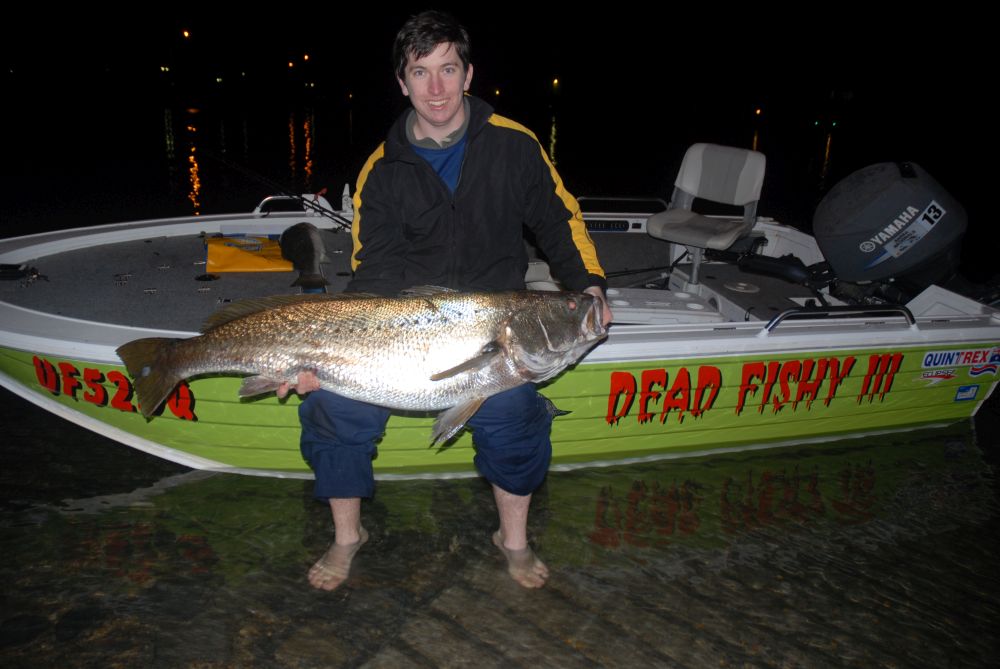
Holes
Deep holes and channels in rivers have always been focal points for anglers. Most fishermen I know get excited when they find a deep hole in a river system. Holes carry plenty of fish at times for a variety of reasons. When there is a big and sudden flow of freshwater into a system, the most saline water sits at the bottom of the deepest holes. Holes also collect structure and debris after floods and they also often hold a lot of baitfish and prawns.
The water flow in a deep hole or trench slows down, and provides shelter in a low flow area where fish can hold position without having to swim hard into a heavy current. When a hole holds reef or structure, it can provide fish shelter on all stages of the tide cycle. Fish species associated with deep holes include mulloway, bream, flathead, barramundi, threadfin salmon and estuary cod. A really good echo sounder with side scanning is a very useful tool for defining a hole and learning the key points of where the structure sits and the fish hold. Prospecting with lures such as soft vibes can be extremely effective when you find a suitable hole.
Rock bars that cross tidal rivers are always good spots to fish. The leading edge of a rock bar creates a pressure point, and the area behind the rocks creates a back eddy. Both are good ambush points. In northern Australia rock bars are always major points of interest when targeting barramundi. In more southern waters they produce mulloway, bream, mangrove jacks and estuary cod.
When you fish a river that is new to you, take time to learn it. If you have a boat, take it for a good run from mouth to well upstream on low tide, look at its current, eddies and features. Look hard, fish minimally on your first trip out. With experience, most rivers aren’t too hard to read. Always stay curious! The more time you spend looking, the more you will be catching.





